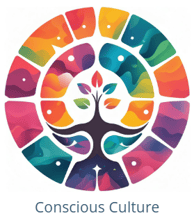Data & Methodology
We combine qualitative research, participatory methods, and data-backed analysis to map your culture as it truly is and guide you toward where it could be.
We Use Both Numbers and Narratives
Culture lives in both data and story.
Some insights are best seen in numbers. Others, in what’s felt but not said. At Conscious Culture, we combine qualitative and quantitative methods to reveal the full picture of your workplace culture because either one alone is incomplete.
Quantitative gives you
Scale: Know how many people are experiencing a pattern
Patterns: Spot gaps across departments, identities, or roles
Measurability: Track change over time with real indicators
Example: A 2022 study by Culture Amp found that companies that tracked engagement by demographic groups were 4x more likely to identify equity gaps and 2x more likely to close them.
Qualitative gives you
Depth: Understand why people feel what they feel
Context: See the cultural dynamics behind survey numbers
Emotion + Trust: Center voices that might be flattened in metrics
Example: Research by sociologist Arlie Hochschild showed that workers often adapt to toxic environments by normalizing overwork; something that wouldn’t show up in a standard employee satisfaction survey.
Workplace Culture & Organizational Health
Gallup (2023). State of the Global Workplace Report— Links engagement, trust, and wellbeing to organizational outcomes.
